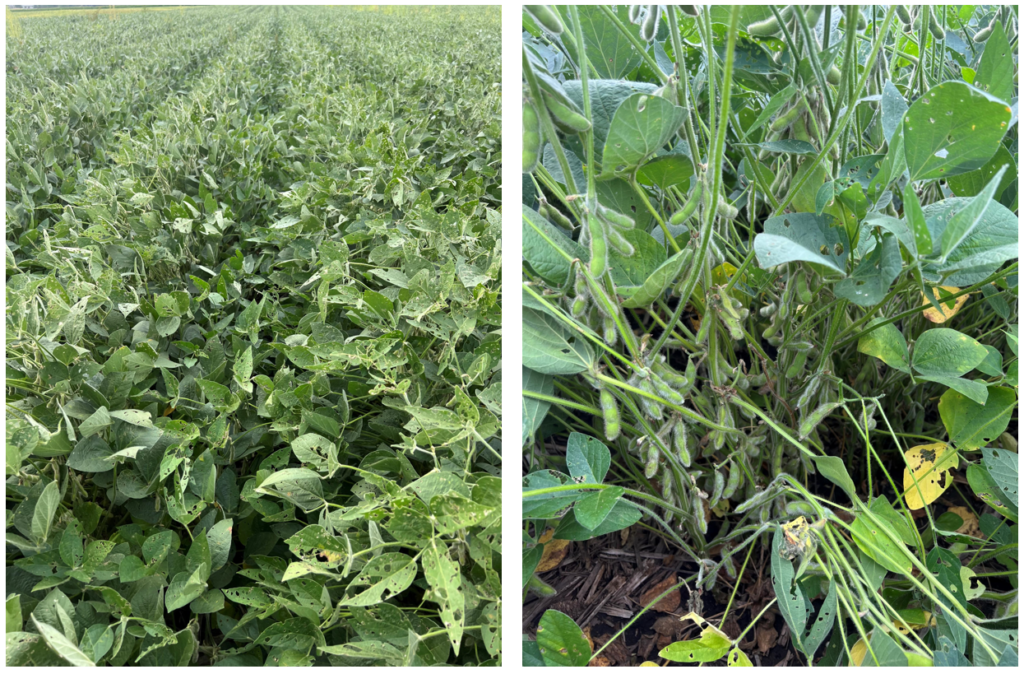The 2023 soybean crop as the season winds down
Rainfall in the first two weeks of August recharged soil moisture across much of Illinois, but since then, the combination of low rain amounts and very high temperatures (4.7 to 8.9 degrees above average) brought on some stress during the last week of August. The August 29 U.S. drought monitor map from last week showed about 43% of the state with no stress, 42% abnormally dry, and 15% with moderate drought. Parts of central and southern Illinois received between 0.5 to 1.5 inches of rain this week, but much of northern Illinois remains very dry. Soybeans planted late or growing in light-textured soils may not have enough water to finish filling pods normally in the driest areas.
Planting and emergence of the 2023 soybean crop began a little earlier than normal (Figure 1), and like corn, the soybean crop benefitted from having no standing water following planting: stands are good in most fields, roots are healthy, and levels of soilborne and foliar diseases are low. Temperatures this season have been near normal on average, with some stretches of above-normal and some of below-normal temperatures. Overall, crop development, including flowering, podsetting, and the onset of leaf drop have been normal to a little ahead of normal (Figure 1). The fact that the interval between podsetting and leaf drop is of normal length means that the crop is not coming to a premature end. That generally translates to good podfilling.

Crop condition and potential
As of September 3, 7% of the Illinois soybean crop was dropping leaves, with most of the crop setting pods (89%). Given the dry conditions early in the season, soybeans are shorter than normal, without full canopy closure for much of the state. This can mean lower yield potential because the crop is not maximizing light interception and photosynthetic rates. Rain in the first part of August did, though, add some nodes and pods to plants, and in most fields, the crop canopy has had the dark green color that we associate with good yield potential. Crop conditions have improved almost linearly since the end of June, reaching 70% good + excellent by August 14. The USDA-NASS crop progress report classified 58% of the soybean crop to be in good + excellent condition on September 3, down 10 percentage points from the August 27 rating. Figure 2 shows pictures from a field near Champaign on September 6.

The August 1 estimate for Illinois soybean yield is 62 bushels per acre, down one bushel from the 2022 final yield. We have little reason to question that number. Soybeans that mature during warm weather dry more quickly than corn, and we should be ready to harvest them as soon as they reach 13% moisture. Once they get below 10 or 11 percent moisture, loss at the cutterbar and seed damage while passing through the combine both increase. Dry soybeans take on moisture as dew develops, so harvesting in the morning may help lower harvest losses. Cooler conditions that we expect by mid-September will also help get the crop harvested with less loss.





